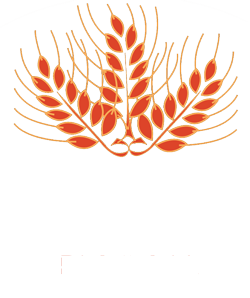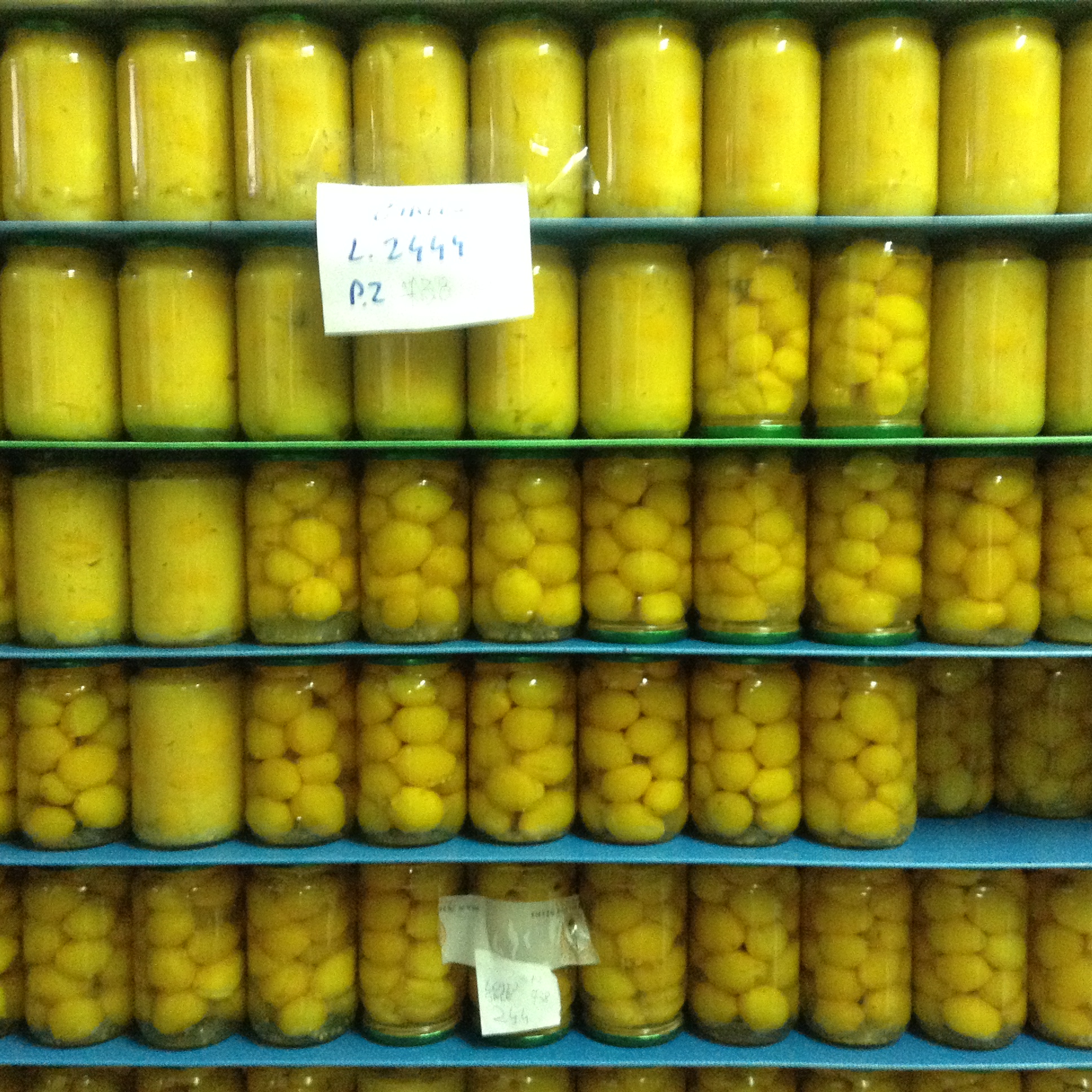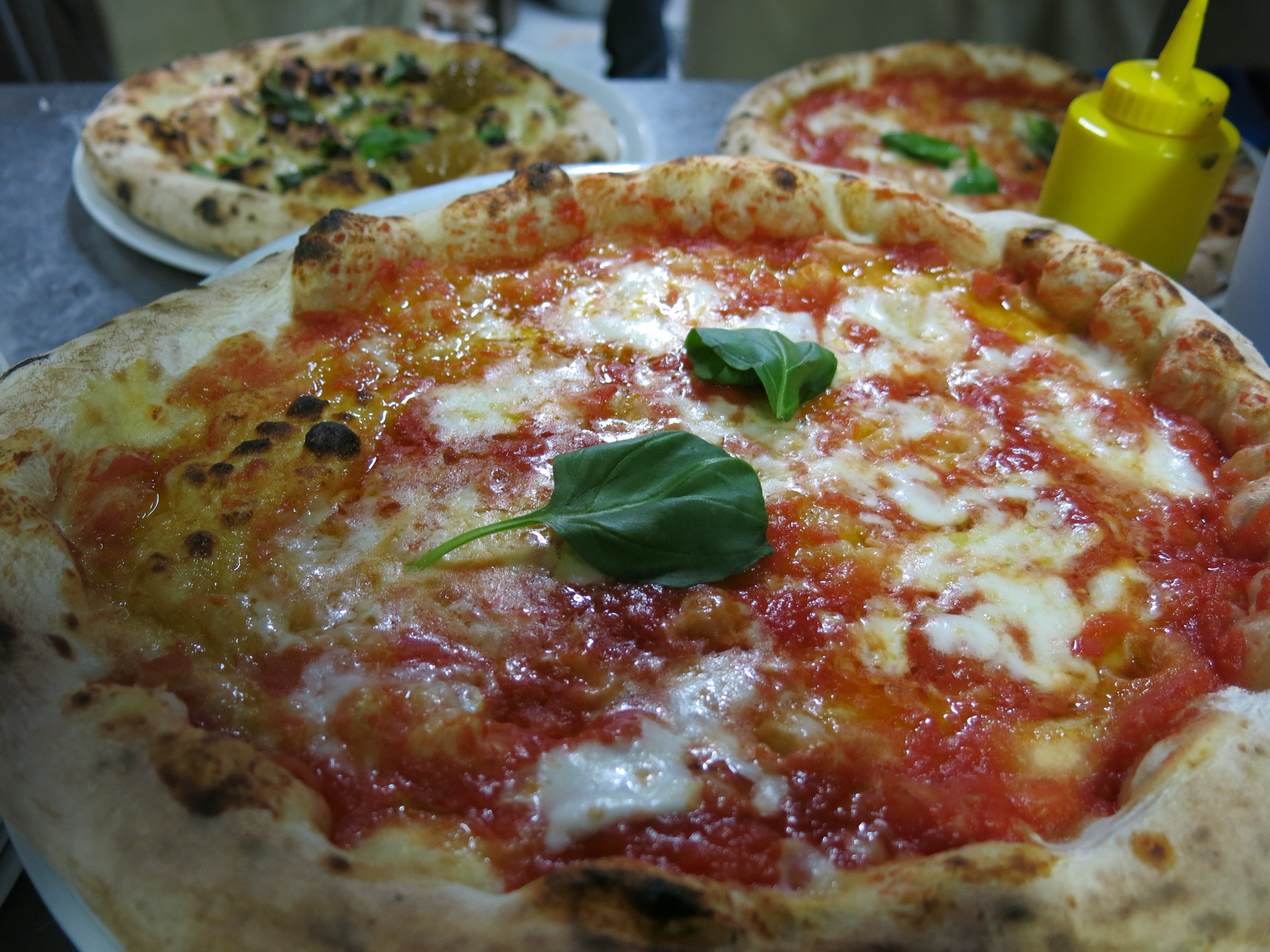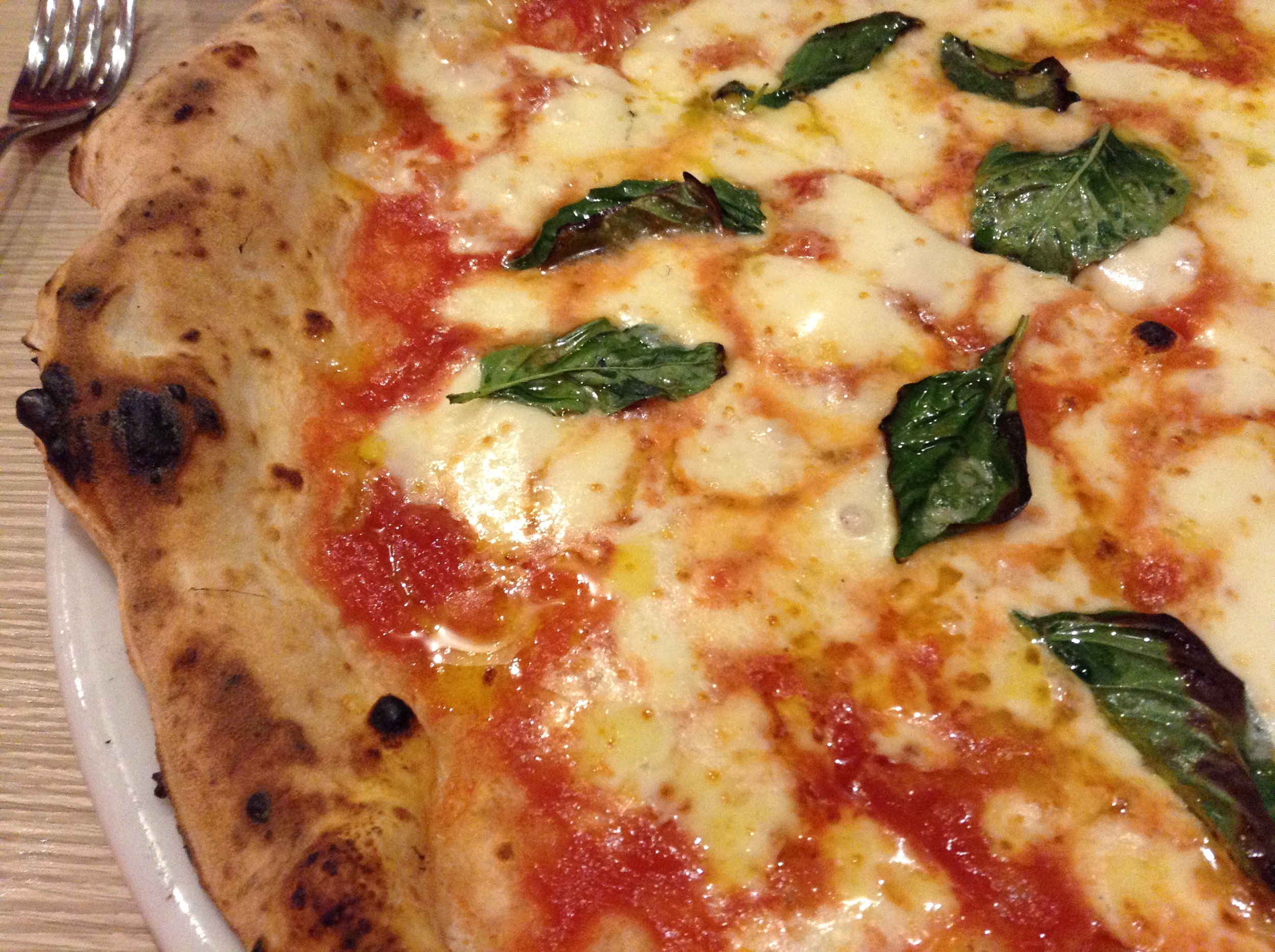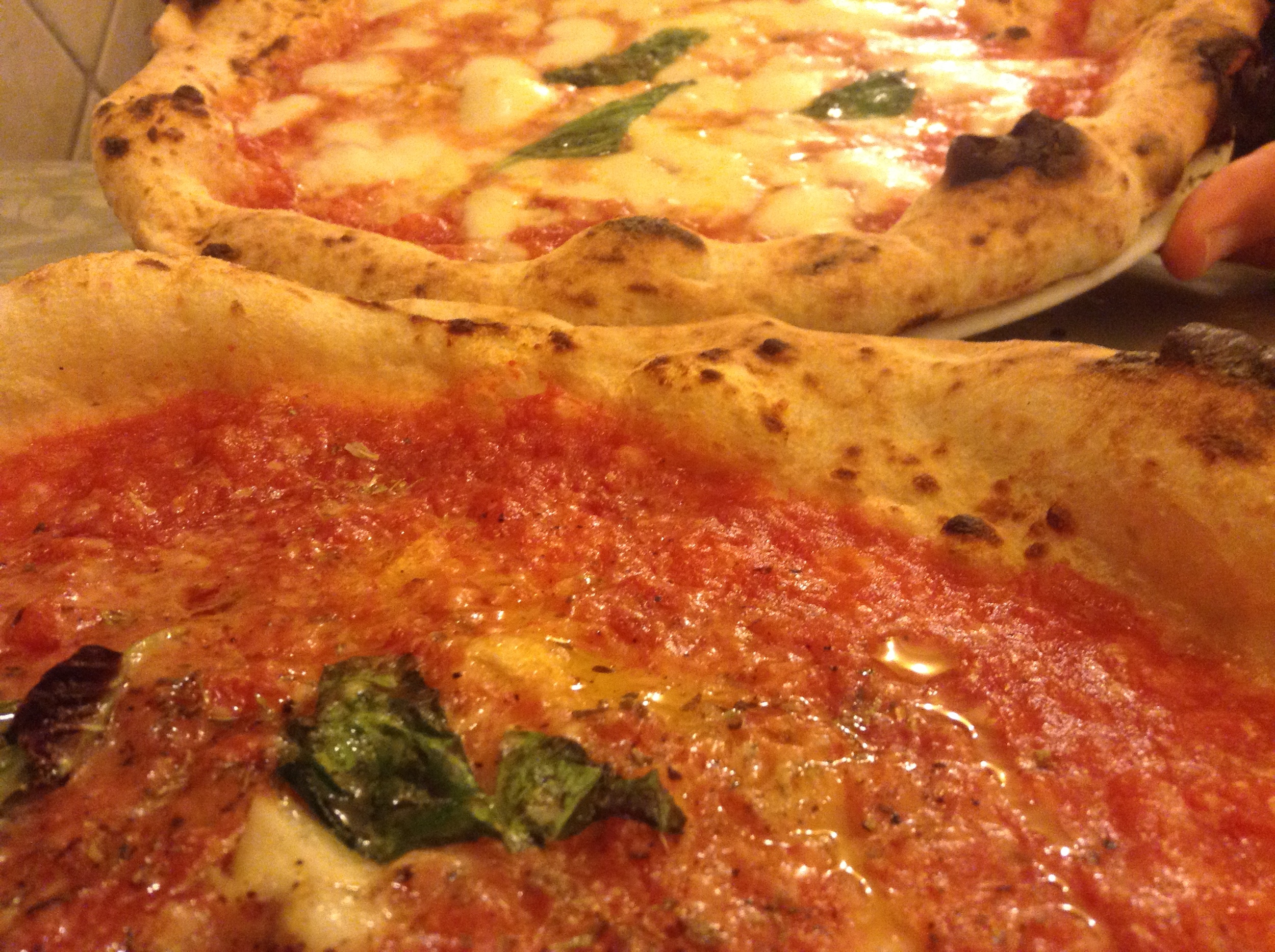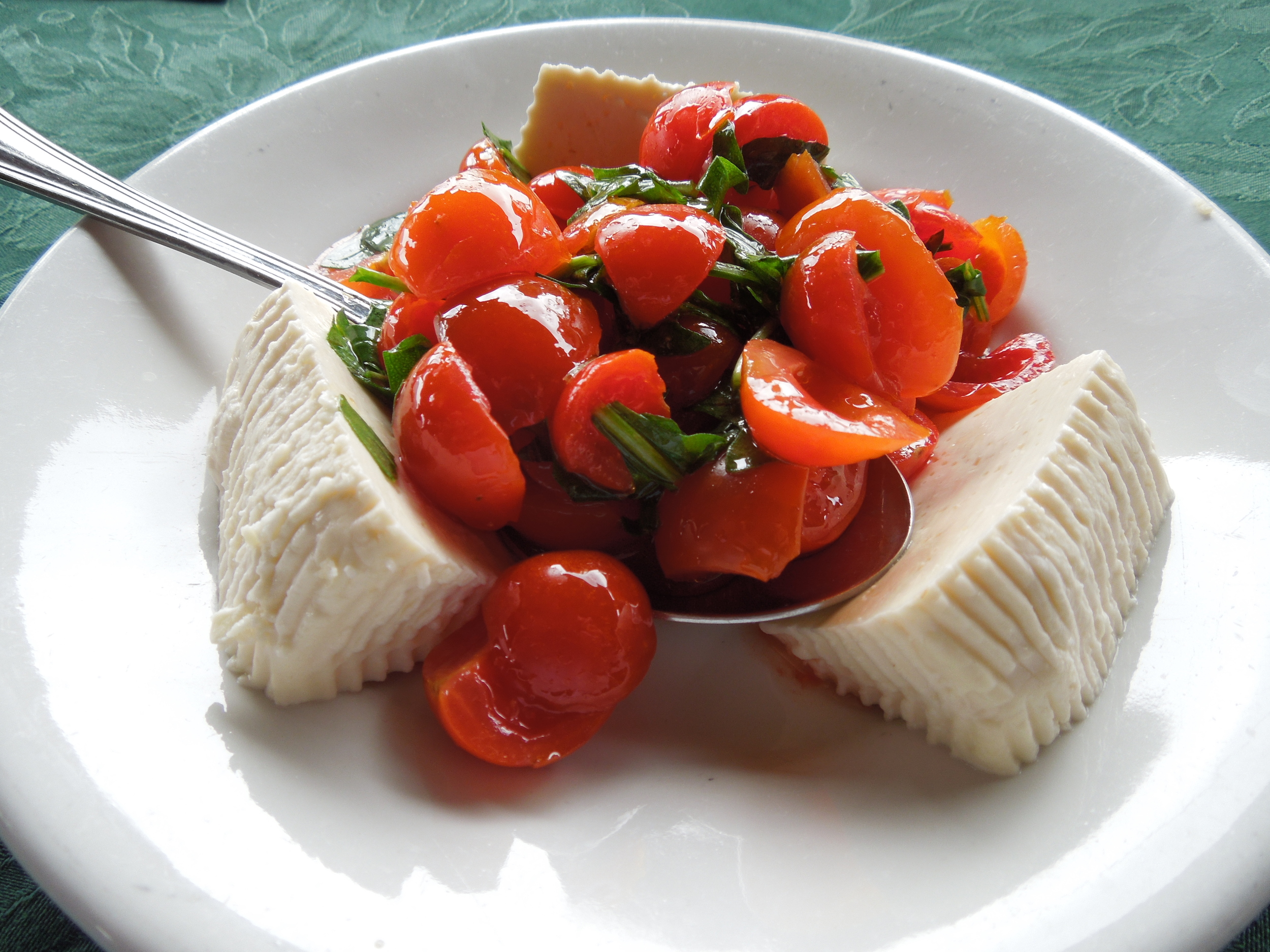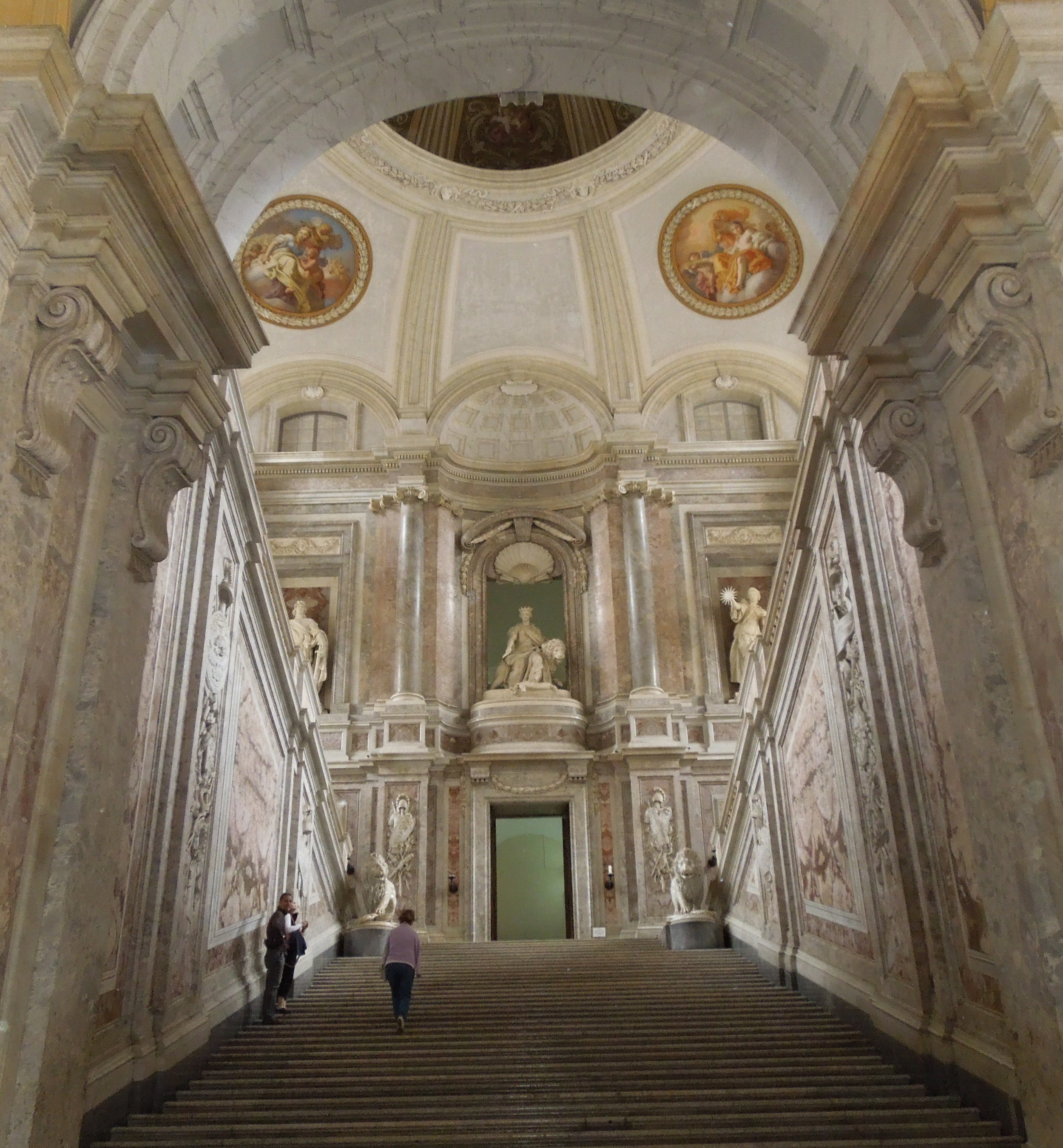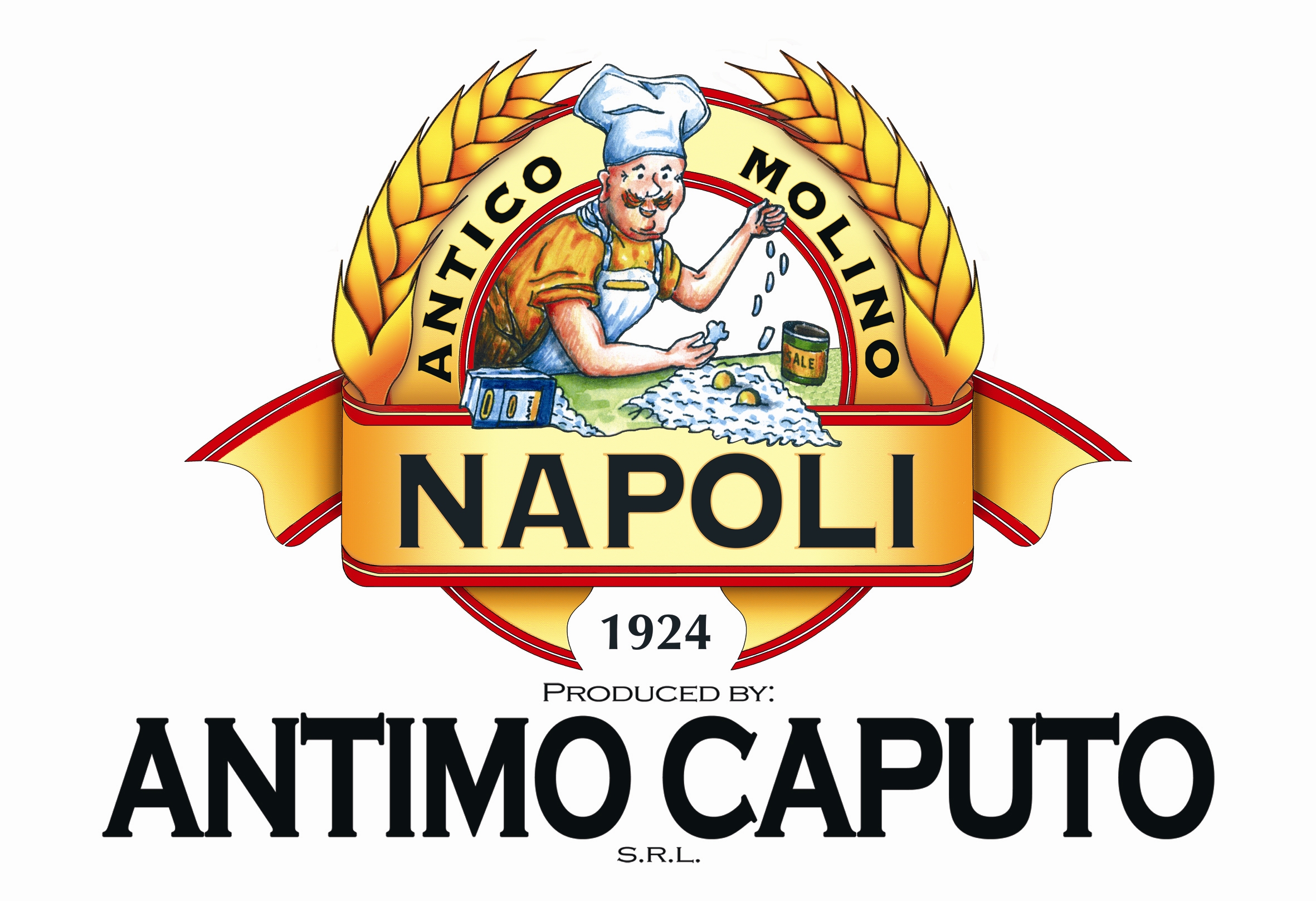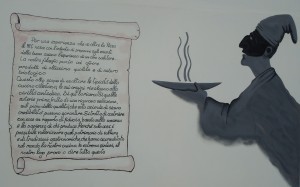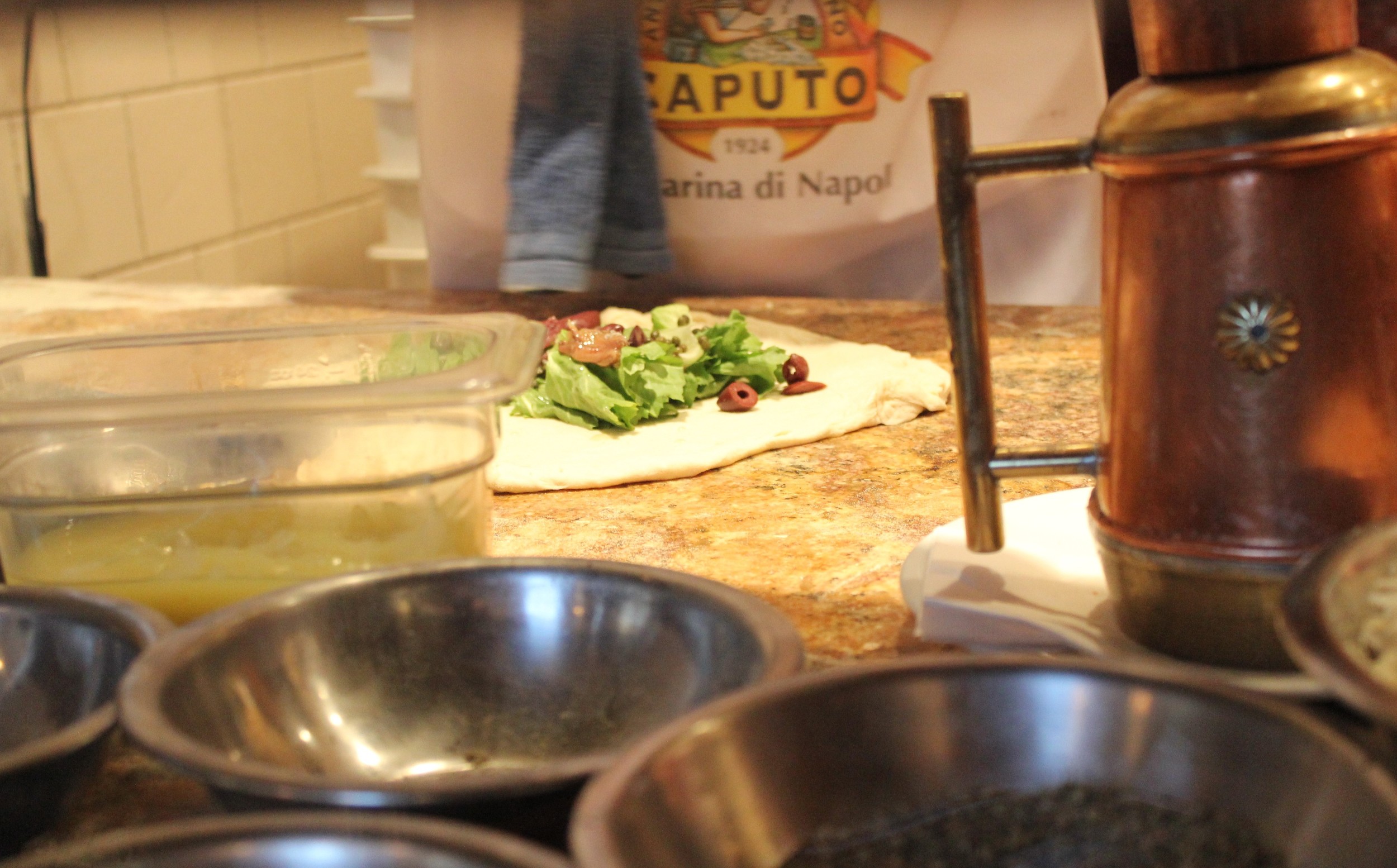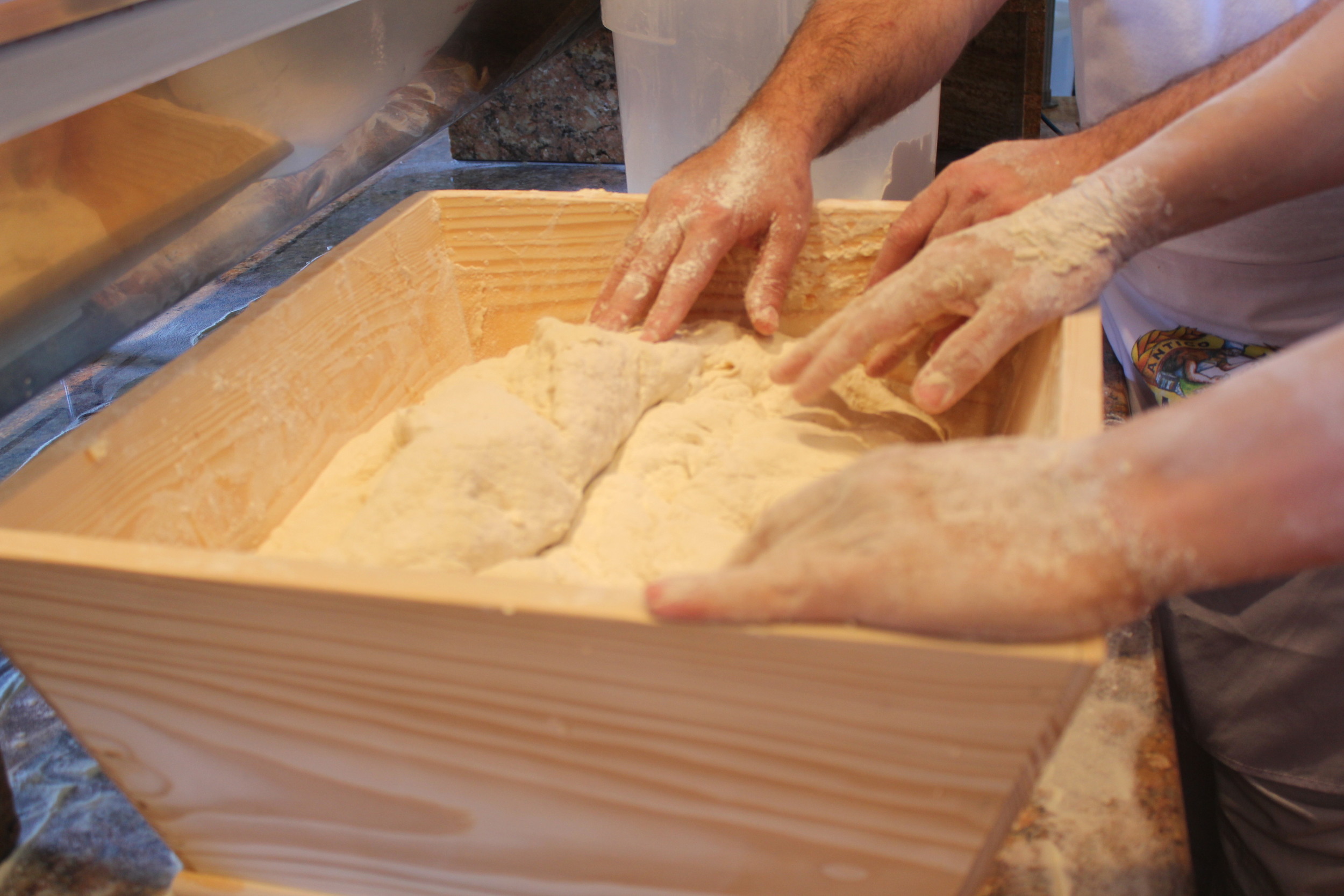While harder to imagine as winter settles in, nevertheless I have fond memories of my spring 2014 visit to Napoli. Wild flowers were blooming, grasses were brilliantly varied shades of green and asparagus were waiting to be picked. Once more I settled with ease at the Agriturismo Le Campestre (Castel di Sasso), as one returning to a home away from home.
With Domenico Mazzella, my usual traveling partner there, we hit the town of Tufo, 30 miles east of Naples, to meet with Ferrante di Somma di Circello of the Cantine di Marzo. The cantina dates back ten generations to the year 1647. As the plague devastated Naples, Ferrante’s ancestor, Scipione di Marzo, fled his hometown of San Paolo Bel Sito, located near the town of Nola, arriving in Tufo. He later built his winery here, which is one of the oldest in Italy. Scipione took with him some of the local white varietal vines, at the time called both Greco del Vesuvio and Greco di Somma. Ferrante refers to commonly known genetic studies that link this grape to Asprino di Aversa, a wine we have begun label approval for having in house shortly.
Succeeding generations of the family made major land acquisitions in the area. These increased land holdings led to the discovery of sulfur and brimstone. In 1866, while riding his horse on his estate, Francesco di Marzo noticed shepherds on his property burning rocks to keep warm. While examining the rocks, he understood they were burning the brimstone they found on the land. With this discovery, the family began a large mining operation of the natural brimstone, known as the gold of tufo. Rich in nutrients, it was valuable to agriculture as a soil- enhancing agent.
Greco di Tufo, with its minerality, complexity and aromatics, ages well and has less fruit than many of the other local white wines. Its unique characteristics derive from the sulfur and tufo rich soils. Millions of years ago a shallow tropical sea covered the area. Deposits of shells and organic matter created diversified geologic strata, and the resulting abundance of brimstone, sulfur and chalk. The roots of the planted vines act as a sponge with the brimstone and sulfur, contributing to the aromatic signatures of the grape. The terroir of the region helps distinguish this Greco di Tufo from Greco wines of surrounding areas.
Ferrante, along with his father and sister, are engaged in an ambitious program to bring their Greco di Tufo production to a level that reflects their four hundred years of tradition. Having studied wine making in Burgundy, Ferrante is adept with all technical aspects of their operation. He has a great understanding of the traditional French method of Dom Perignon and is very proud of the sparkling Greco he produces. In fact, in the 1800’s, with the initial onset of the devastating plant disease phylloxera in France, the French had to look to the Italians for the production of a sparkler similar to their beloved Champagne for importation.
Although I could have listened to Ferrante for many more hours, we had additional wine makers to visit. Bruno DeConciliis, someone very dear to our hearts, lives near Paestum in the Cilento. Last year we introduced two of his wines, a white spumante and a red that Bruno personally made for our pizzeria. Bringing his wines to Spacca is a wonderful collaboration, and an important part of our mission to celebrate art, innovation, spirituality and friendship.
I asked Bruno how best to describe our “Cuore D’Oro” (Heart of Gold) wines, and along with technical notes he wrote,
“If you have had some feelings with these wines, I expect you to emphasize this in any way you want. The project Cuoredoro is based on our relationship. Without this, it is an empty amphora; filled with liquid that is not the wine you and me know. The wine is a glue among mad pizzaioli and farmers, among artists, simple people, families, workers, a bridge between different places and cultures!”
I treasure these words. They reflect my experience over the years with many of the artisans we work with, be it producers of wine, cheese, tomatoes, fruit, salumi, olive oil, vinegar, pasta, and pizze. There is a story behind each product that we share with those coming to the pizzeria. It is as close as we can get to the artisans themselves with us at the table.
Other wineries we visited over the course of the year included Cantina Mazzella in Ischia for Biancolella , Masseria Campito in Gricignano di Aversa for the elusive Asprinio di Aversa, and Tenuta San Francesco in Tramonti along the Amalfi Coast. San Francesco is nestled into the Lattari hills beyond the coast. The Tramonti area, with its many villages, and their vineyards and churches, is an unexpected treasure. It is a place where time seems to have come to a stop. Along with Aglianico, Piedirosso Falanghina, and Biancolella, Tenuta San Francesco produces both white and red blends, , incorporating rare varietals such as Pepella, Ginestra, and Tintore. We will present these wines after their arrival in early 2015. As we broaden and deepen our inclusion of Campanian wines, we will have more zones and varietals represented. I am indebted to Domenico Mazzella, and could not have done this work without him.
The coastal village of Furore was our base of operation while exploring its local wine. It is known for its murals and as “the village that does not exist”. There is no piazza or center square. We stayed at the Hotel Bacco with its wonderful restaurant and its commanding view of the sea. The owners, Erminia Cuomo and her husband Raffaele, and their children Letizia and Domenico, treated us as family. They are Domenico’s longtime friends and have been in residence there since 1930. The hotel is an ancient inn on the road leading from Amalfi to Agerola. It offers simple pleasures. With its commanding view of the sea from its perch cliff side, the light, sounds, peace, and serenity infuse one with a sense of joy and belonging. Eating there is a spiritual activity. Ingredients are carefully selected and linked to the territory and the season, such as cecchi, alici, and baccala cod. Here, as described on their website, “each bowl of pasta and platter of fish is a flavor packed celebration of the Mediterranean.”
Just down the coast past Vietri Sul Mare is the small fishing village of Cetara. One does not go there for its beaches, but for its Colatura; an amber colored anchovy extract. Similar to the Ancient Roman garum, it is rich and aromatic and is used to flavor foods of almost every kind, like salt might. It is considered a unique product of gastronomic excellence. We visited with Giulio Giordano at his shop Nettuno to learn firsthand the process of preparing the anchovies for salting, packing them in terzigno wood barrels, and the eventual extraction of the “liquid gold.” It is a tradition passed down generation by generation.
Pizza fritta (fried pizza) is a popular, centuries old choice among many in Naples that has crossed over to America in recent years. I trust that five years ago, few here knew of “the montanara” or of Forcella, a quartiere (neighborhood) in Naples. O Pagnottiello and D’e Figliole were two friggitorias that Domenico wanted me to try; they are the first two stops on the pizza tour he offers through his Discovers Naples organization. Both locations were loud with the hustle and bustle of the street, and locals waiting on the sidewalk for the quick and flavorful take-away it is meant to be. They sure are tasty.
There was a new pizzeria to visit. Hache is in the chic Chiaia area along the lungomare. Though some may say, as does the owner Fabio Amibile, that their “gourmet” pie is a step removed from a “vera pizza”, it is as soft, fragrant, and digestible (the holy trinity) as many I have sampled. It reminded me of the pizze put out by Franco Pepe. Both use the highest quality ingredients typical of Campania, and great attention is paid to the dough. The cornicione, the pie’s border, was light and airy. The dough also reminded me of the impasto of the Salvo brothers, Pellone and Di Napoli in Fuorigrotta Fabio’s use of Piennolo tomatoes and capers on the marinara was delicious and eye-catching. Though many have been making use of these tomatoes and other varietals over the years, I had not paid as much attention to the tomato in its own right beyond the San Marzano. Long story short, our storage area at Spacca is now filled to the brim with tomatoes of all types; San Marzano, Piennolo red and yellow, Gragnano and Corbarino. Though these tomatoes are all from Campania and from small producers, their profiles vary with each microclimate, soil composition, and method of production.
Over the years I have worked with many well-respected pizzaiuoli in Naples, such as Antonio Starita, Enzo Coccia, Adolfo Marletta, others at Di Matteo and Da Michele, and Roberto Caporuscio in America. In more recent years, I have followed the work of Franco Pepe in Caiazzo. His method of making impasto by hand, as was done by his father and grandfather, is unique. The way he works the dough by hand, diving in with open fingers, allows more air to circulate in the dough, thus more lightness and gentleness to the dough. The open hand also allows an immediate tactile sense of the mix. It takes patience and time and utter devotion to make such quantities by hand each day—upwards of 600 pagnoti on a busy weekend night. Franco is considered one of the greatest pizza makers in the world.
I have also devoted much energy to understanding how pizza verace (classic Neapolitan pizza) differs from pizza rustica and other artisanal styles of pizza. This year, I returned to the core of my initial studies to focus on pizza verace, the classic method. I visited all the pizzerias mentioned above again, along with Attilio Biachetti in Pignaseccha, Pizzeria Lombardi and the Salvo brothers at their respective locations; Francesco and Salvatore at Salvo, and Ciro at 50 Kalo. Although these pizzaiuoli may differ in how they make their impasto (dough), amount of yeast, water temperature, type of mixer, rise time, use of refrigeration or not, and gentleness of hands when extending the dough, they follow the standards set forth by the VPN. While I will continue to make dough by hand on occasion and experiment in other ways, on a daily basis I am using the methods I originally learned, coming full circle.
(http://www.fornobravo.com/vera_pizza_napoletana/VPN_spec.html)
With that said, I have introduced a few new pizze at Spacca. They are terrific with a light sparkling Gragnano. My first is a white pie I saw on the menu at Pepe in Grani. It uses bufala mozzarella and is topped with the aforementioned tomatoes. The concept is to use one cheese alone to highlight the nuances of each tomato. The second pie, also white, is Enzo Coccia’s creation. It pairs four particular cheeses, bufala, fior di latte, scamorza, and affumicato, with four particular tomatoes in quadrants on the pie and is a touch more complicated to make. I predict it will be difficult to choose a favorite.
